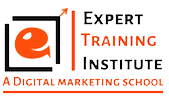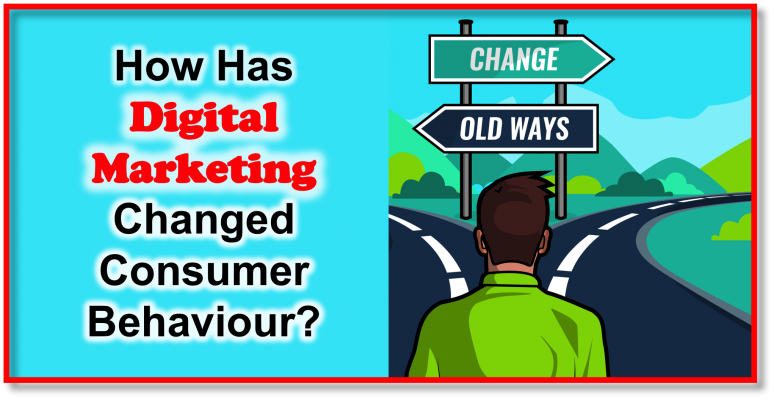Digital Marketing in a Company’s Marketing Policy
Digital marketing strategies are a strategy to help your business achieve specific goals using carefully chosen marketing channels like paid earned, owned, and media. A digital marketing campaign without a plan in place is like traveling to a new place without having a GPS. You are more likely to make many wrong routes, which can lead to frustration as well as an inexplicably long journey to get to where you would like to go.
If you’re planning an excursion, you’ll likely start by preparing an itinerary that will help you maximize the value of your budget and time. Similar to digital marketing. A marketing plan is crucial to increase effectiveness.
Here are the five key elements that are essential to creating an effective online marketing plan.
Goal Setting: Determine the direction you want to go
When planning an itinerary you’ve got a destination set in your mind. Creating an online marketing strategy is the destination that is a set of clearly defined marketing objectives you want to achieve through your efforts. The goals of your marketing strategy must be linked to the primary objectives of your business. For instance, if the purpose of your business is to grow your customer number by 20 percent, then your marketing aim should be to generate viable leads that contribute to this success.
Whatever your goals are, you should ensure that you are measuring your outcomes. Perhaps your goal is to increase email sign-ups. In this scenario, the key measure of performance (KPI) is likely to be an increase in the number of sign-ups.
Understanding Your Target Audience
When you travel, you understand the importance of knowing the way. You don’t want to look like a weird tourist. This is also true when it comes to digital campaign marketing. This requires understanding your audience’s demographics, the target market, and the psychology of both existing and potential customers.
There are many actions a prospective buyer needs to traverse to reach the point of purchase and ultimately, to become a loyal customer. The steps may differ however they typically start with education and brand awareness and then progress into the contemplation phase before concluding with an agreement and conversion.
Effective Content Marketing
You shouldn’t just write any content or follow a “spray and pray” method. You must be thoughtful regarding the topics you’re writing about, the terms you’d like to use, put an SEO keyword strategy in place, and consider constantly optimizing your website’s content.
Create Your ideal customer profile (ICP) as well as Buyer Personas
The opportunity to meet new people is one of the greatest aspects of traveling! However, it’s not a good idea to attempt to connect with someone who doesn’t have an intention of speaking with you, would it? Perhaps there’s an issue with their language or they’re not interested in you and what you do.
The same applies to marketing. As a digital marketing professional, you should create buyer personas so that you can identify the person you would like to talk to in the knowledge that they’ll be interested in interacting with you.
Remember, who you create must be based on your research. Have you experienced the effectiveness of a particular segment of people? That’s great, so focus on them! It’s beneficial to be precise. Avoid the clichés and explore the facts using readily accessible tools such as Facebook Insights on Audience Insights as well as Google Analytics.
It is possible to begin identifying the personas based on basic information like the title of the job and where it is located. Also, you must determine the goals of this person to achieve, for example, the solution to a particular issue (an issue that your business could solve)! Then, you must determine the best method to contact the person in question, which brings us to the fourth step.
Determine the most efficient channels for marketing and buy-in stages
If you’re looking to get to know local beer enthusiasts and beer lovers, you could go to the local pub. When you’re looking to meet decision-makers within a particular industry it is important to decide the best place to meet them and what message to make use of based on where they are at on their purchasing journey.
The awareness phase can be targeted at education and creating expert knowledge while making sure to target decision-makers within the ideal verticals for clients. The KPIs for this type of campaign might include impressions, reach as well as involvement.
The consideration phase will influence and reward the consideration stage and encourage the people who are participating in your awareness program by promoting or promoting your value offer. The KPIs of this campaign could be related to the leading generation.
The conversion phase would increase sales. This stage could drive sales by retargeting visitors who have visited the site in the past. The KPIs of this campaign could include an appointment that is booked through an online form or an agreement or proposal that has been signed.
If you structure your campaigns to address the needs of your customers at the point at which they are in their journey, you can advance towards your business and marketing goals more effectively.
Keep buyer personas in mind. You’ve got a clear knowledge of your target market and what they are buying and how they purchase, but you have to figure out how to reach them.
If, for instance, your customer is a journalist aged 35 who consumes news on the internet then Twitter could be the ideal way to connect with them.
Selecting the best digital channels can help improve your ROI. There are more marketing channels than ever before therefore be smart about determining the location where your buyer personas are situated, and then connecting with them through the channels.
Be sure to send the message correctly
Let’s say that you’re on your own and you stop by an establishment in town to enjoy a drink in the bar. You come across someone you’d like to chat with, and you realize there’s an art to talking to them. This is the same for your advertising campaigns!
Create your message to be a match for the person you’re trying to connect with. The voice and contents of your campaign need to convey your message in a manner that they can comprehend. This is where the research and plan from the previous steps are brought into the full circle.
If you’ve determined the stage they’re in on the funnel of sales, then you’ll know the right place to begin the conversation. If they don’t know anything about your company (prospecting stage) Then you start by establishing your knowledge and establishing confidence.
If you’ve identified your buyer’s persona and you’re selling a product it is important to be aware of their needs and be able to provide them with a solution to help them solve their issues. If you’re selling products, you must be aware of their needs.
If you take the time to make sure you get your message just right, possibly or even making your message more personalized, your target audience will be much more open to the services you offer.
There are many other elements of a well-constructed digital marketing approach. They cover the basics such as SEO and design for websites as well as more complicated areas like CRM, CRO, data measurement, and analytics.
Web Design. SEO. Content Marketing.
Your website for your company is the primary entry point through which the majority (if some, but not every) of your potential customers go before they become customers. It must be designed to ensure effectiveness, aesthetics, and a smooth user experience. If you don’t properly develop these components that are in place, traffic coming in will fail to convert or, worse, abandon the page without substantial engagement.
The fundamental web design principles should be considered when designing your site to get the best outcomes.
How pages are designed and laid out doesn’t matter, however, when the content isn’t relevant and engaging. Attention should be paid to the creation of engaging content that visitors can connect with.
Here are the best guidelines for writing Web-based content:
- Be sure that the opening can captivate viewers. The content should start with questions or ideas or statements that astonish or astonish, delight, or excite. If the reader doesn’t get engaged within the very first couple of lines odds are they will not stay on the page. That’s right…
- Keep the primary idea higher than and above the fold. The fold is the lower line that most screens cut off the original display. Be sure that your first (or at a minimum, your second) paragraph clearly explains the subject matter. People want to know that they know what they’re getting before they move on.
- Utilize multimedia. Videos, images, and infographics are all viable methods to make your content more dynamic. A lot of text on a screen could be overwhelming for some viewers and the goal is to keep your readers entertained.
- Make use of your voice. Every brand and every company has its unique voice. The people who visit your site are aware of your brand’s voice and that’s why you should ensure that all your content reflects the tone of your website. If those who are reading your content feel that it’s not authentic or that something isn’t right even if it’s just at a subconscious level, they’re more likely to leave or respond negatively.
Writing isn’t an absolute science however there are some fundamentals that most people reach an agreement on. For a great basis for reference to use, study crumb has put together an excellent guide to best practice tips to follow when writing content on a variety of topics.
After you have your website and the content in place now is the time to start looking at methods to ensure that the content is discovered. The most efficient (and cost-effective) method of doing this is to improve the content to be discovered organically by search engines, which includes blogging and aligning your blogger with a strategy for keywords that are highly searched.
Search engines are the engine behind the internet. It’s been estimated by experts that Google alone is responsible for processing more than 3.5 billion queries every day. With staggering numbers such as that there’s no reason to wonder why businesses are working to get their content on the highly sought-after first results pages. If 71% of all traffic stays in that top spot, it’s crucial to use the correct search engine optimization (SEO) to be a part of your online marketing plan.
How Can You Optimize Your Website to Get Search Engine Results (SEO)?
They work by rapidly traversing every indexed website whenever a query has been executed and then analyzing the data using an algorithm that assigns a rank to every page based on an extremely specific set of requirements.
Although the specifics of that procedure are kept private. Certain variables have been found to impact ranking, including:
- Keywords that clearly define the subject to be addressed in the text
- The number of hyperlinks, both external and internal, which connect to and depart from each page.
- The number of high-quality visits and the level of engagement that each page receives
What this implies for your website is that you must make sure that your content addresses all of these issues so that your website can achieve a higher position and increase the likelihood to appear on that first page you’ve always wanted to appear on. This is what sets your content apart from other information on similar subject matter that is saturating the internet with searchable content.
By being displayed on the first page your business increases the chance of getting your content read and is an important measure for search engines like Google in assigning rank. It is also known as”the click-through rate (CTR) that, just like the name implies, the speed that users perform the query click can access your site because of. Similar to how many backlinks are on the website, this metric helps build credibility for your content as well as credibility for your site in general.
The inclusion of these elements as a part of your marketing plan will guarantee optimal results in getting natural traffic to your website and that’s the place where the journey begins for those who visit your site. They will be required to determine how much they will engage with what they discover.



